Abstract
Two fractions of sarcoplasmic reticulum, one light (LSR) and one heavy (HSR), were isolated from gracilis muscle of control and malignant hyperthermia (MH)-susceptible pigs. Part of the gracilis muscle biopsy was used to compare the contracture sensitivity of the muscle to the calcium-releasing effects of caffeine on isolated SR membranes. Gracilis muscle of MH pigs was more sensitive to the contracture-producing effects of caffeine than control pig muscle. The caffeine dose-cumulative contracture response curve for MH muscle was shifted left of that for controls. The amount of caffeine-induced calcium released from SR is a function of the amount of calcium preload and this did not differ between LSR of MH and control muscle. When LSR fractions were optimally loaded with calcium for caffeine-induced calcium release, no difference in calcium-releasing effects of varying caffeine doses was observed between MH and control LSR. At calcium preloads below optimal, the MH-LSR appeared to be more sensitive to caffeine-induced calcium release. The HSR fractions could not be loaded with calcium in a manner similar to the LSR fractions because of an apparent calcium-induced calcium release phenomenon. Therefore, calcium threshold for calcium-induced calcium release was compared between MH and control HSR fraction. The effect of caffeine on the calcium-induced calcium release was also studied. The average calcium concentration threshold for calcium-induced calcium release was markedly lower for MH vs. control HSR; 20 vs. 63 nmol Ca2+/mg, respectively. Caffeine decreased the threshold for calcium-induced calcium release more in the MH than in control HSR. Under all conditions studied, the amount of calcium released did not differ between the two groups. Ruthenium red increased the threshold calcium concentration for calcium-induced calcium release while it reduced the amount of calcium released. Increasing concentrations of Mg2+ increased the Ca2+ threshold for release and the amount of Ca2+ released but did not significantly affect rate of Ca2+ release. Results of the study suggest a defect in the mechanisms causing calcium release from SR in MH-affected muscle.
Full text
PDF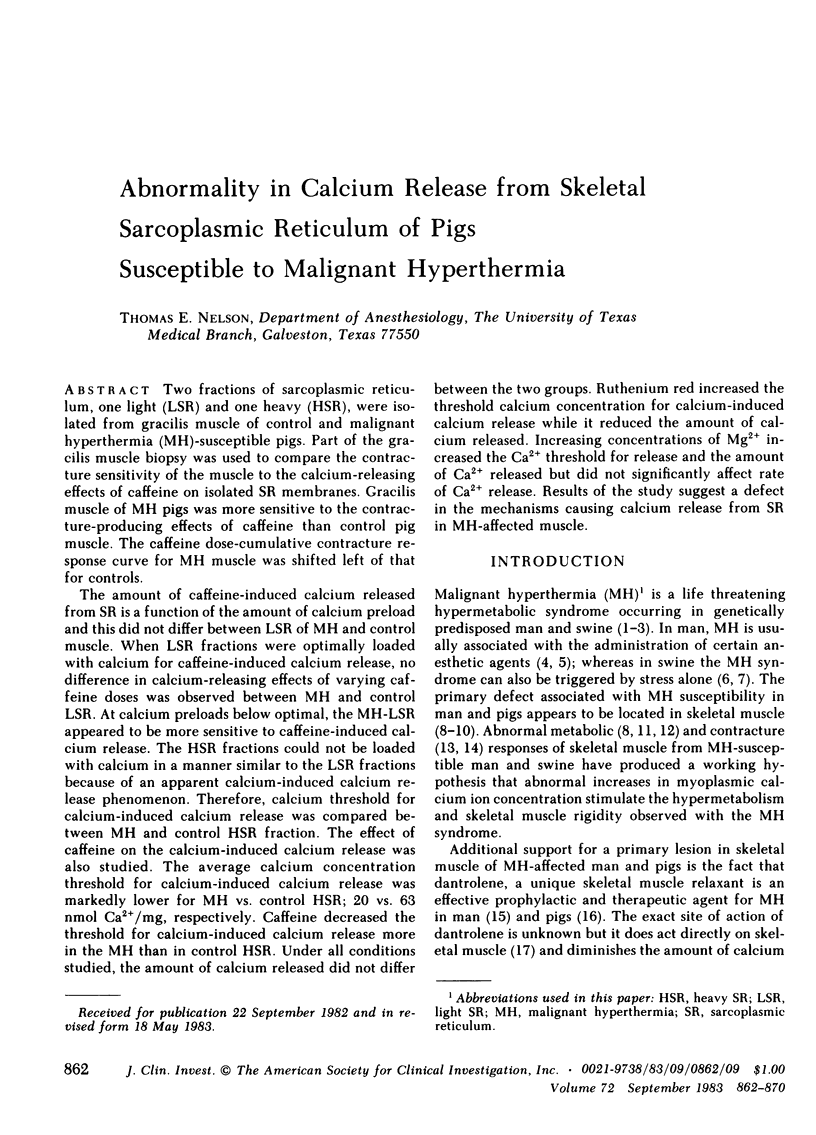
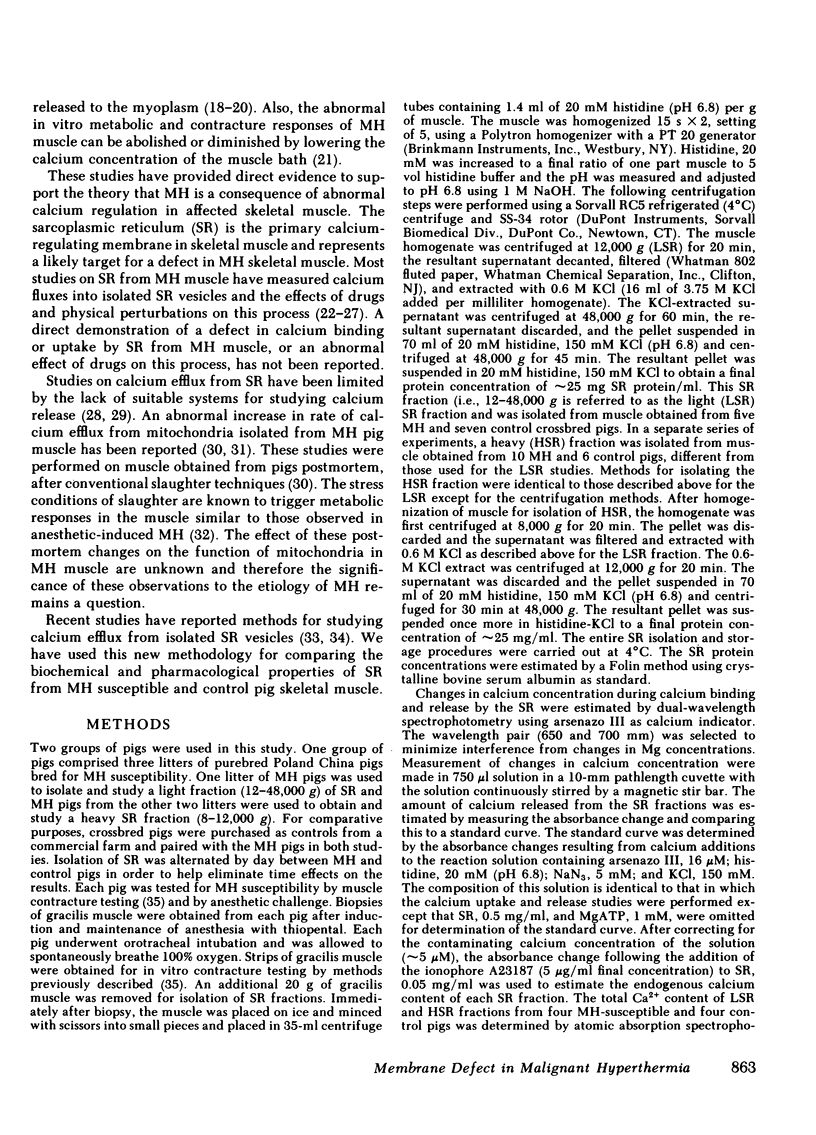
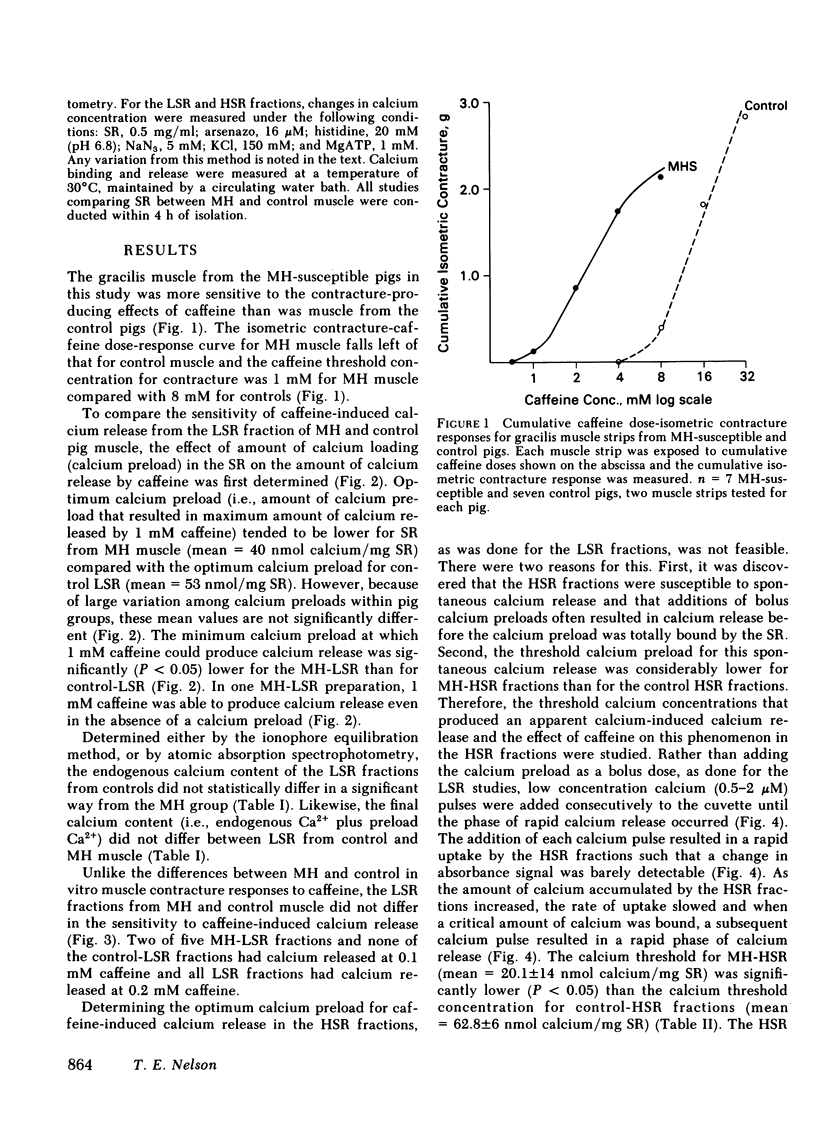
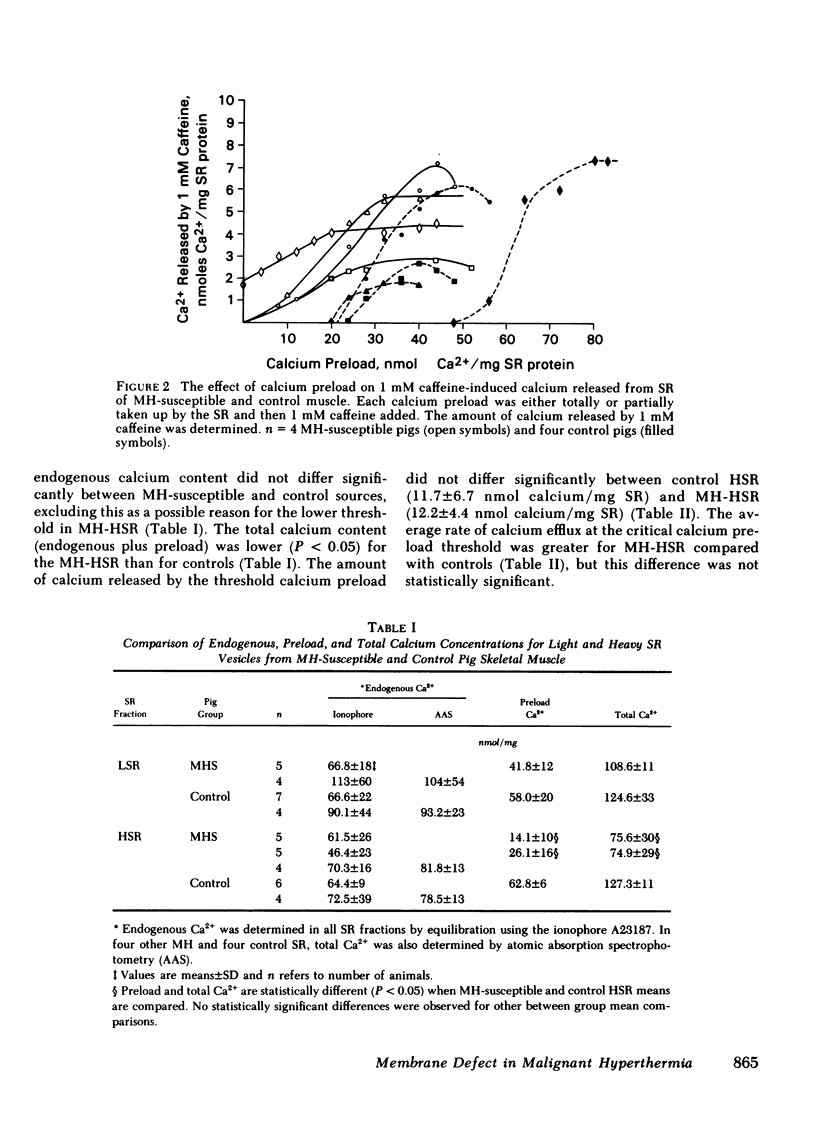
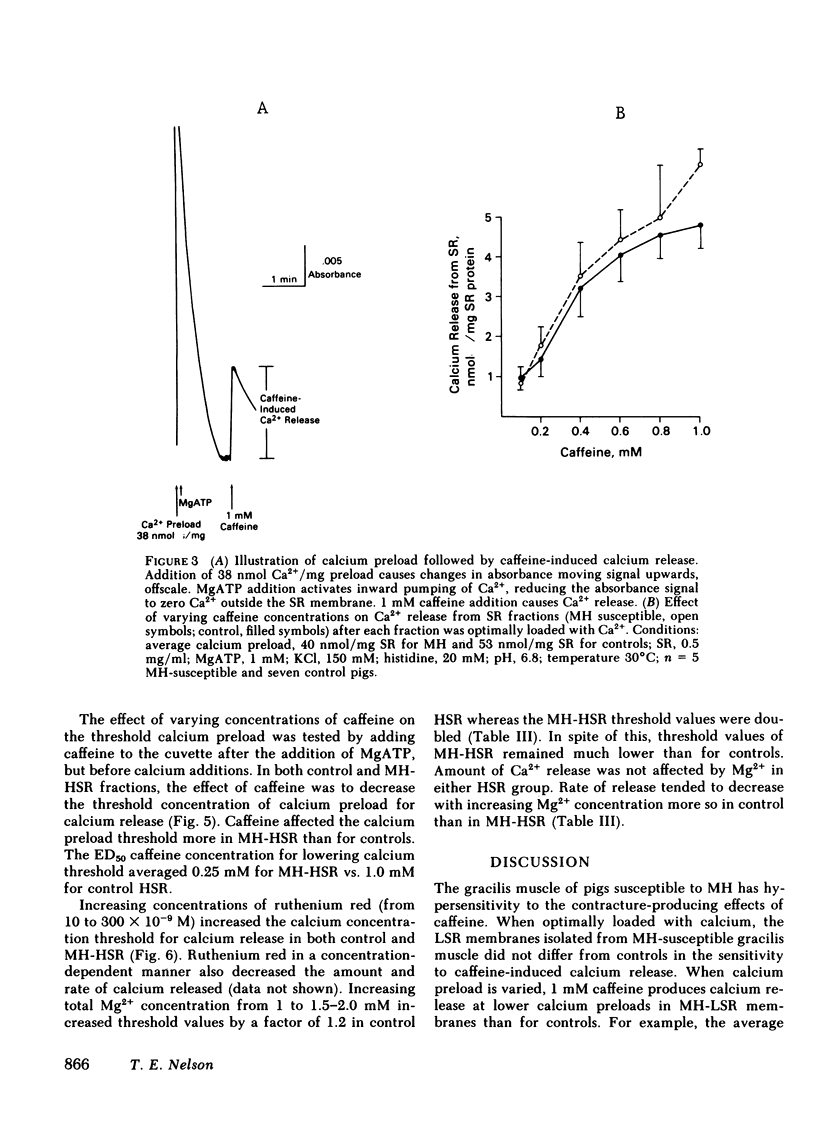
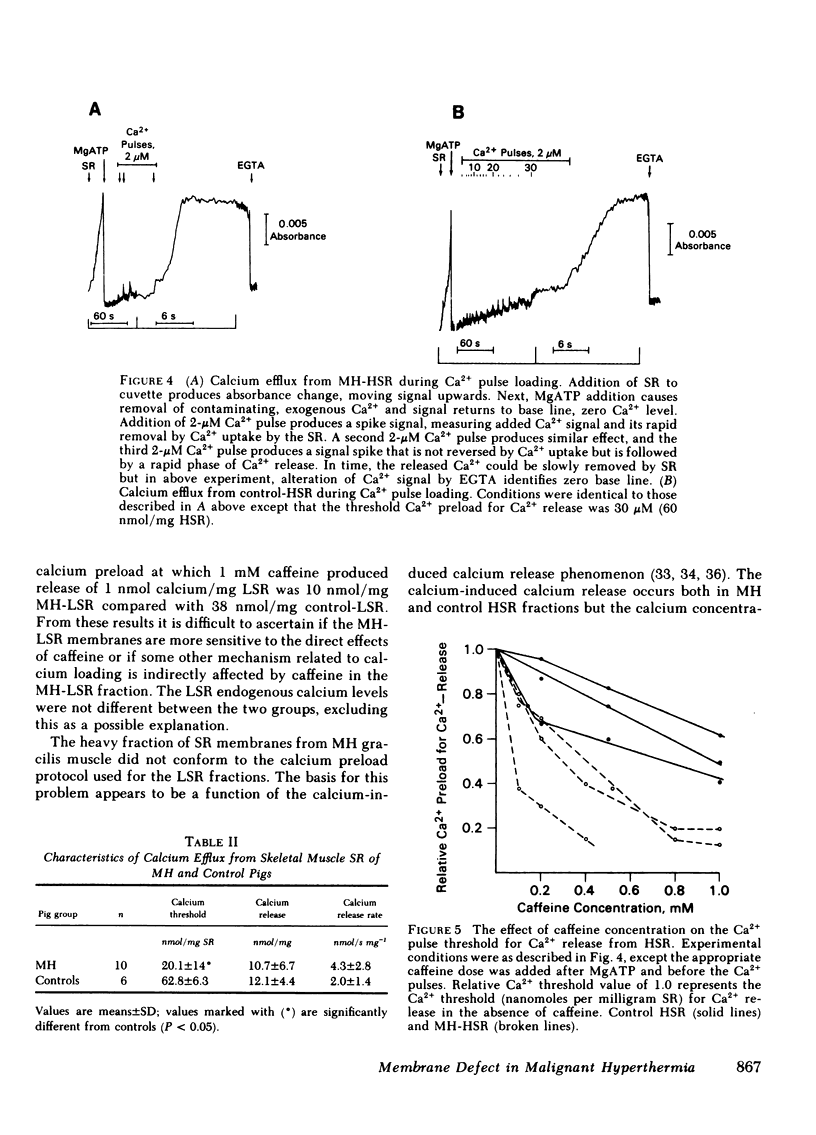
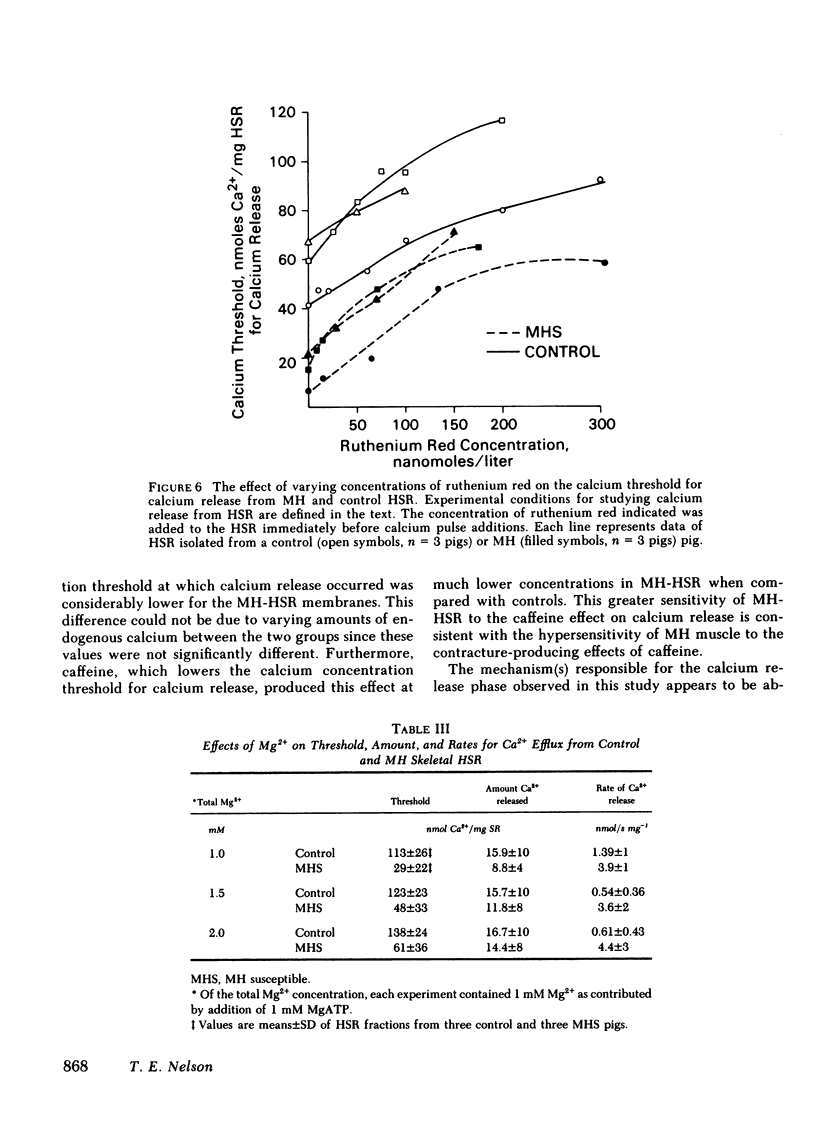
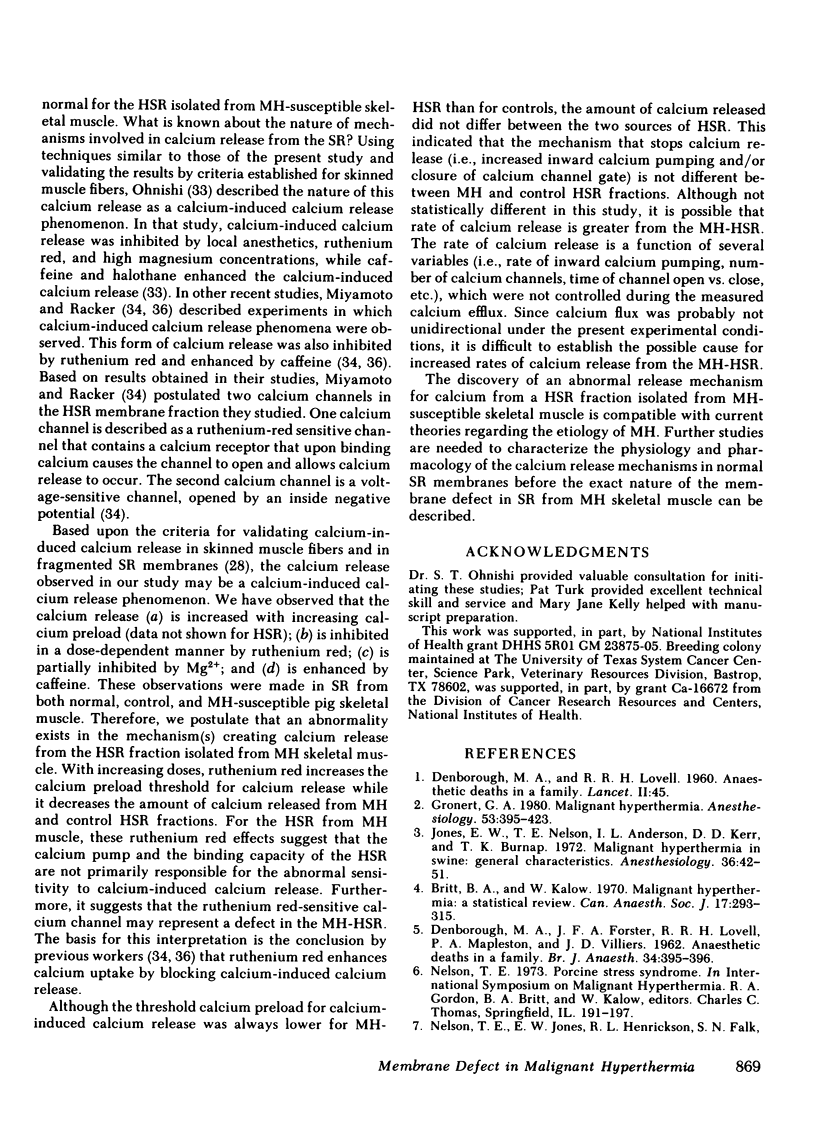
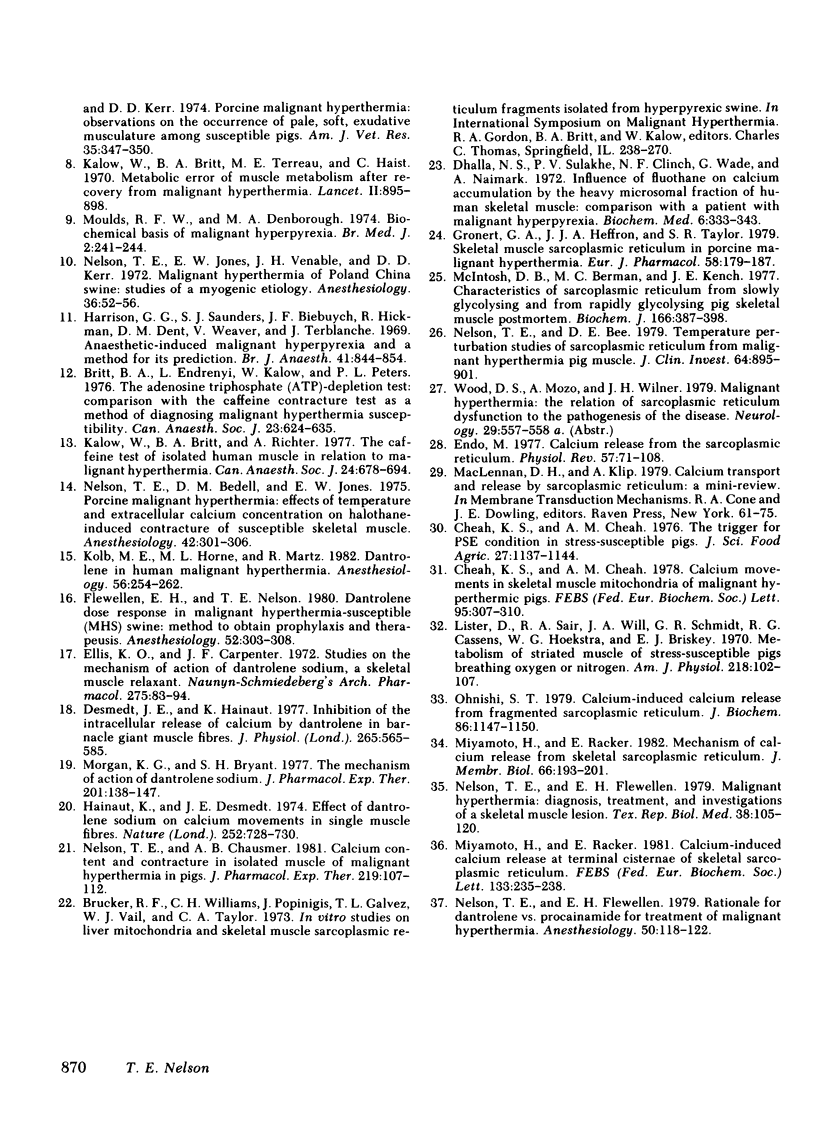
Selected References
These references are in PubMed. This may not be the complete list of references from this article.
- Britt B. A., Endrenyi L., Kalow W., Peters P. L. The adenosine triphosphate (ATP) depletion test: comparison with the caffeine contracture test as a method of diagnosing malignant hyperthermia susceptibility. Can Anaesth Soc J. 1976 Nov;23(6):624–635. doi: 10.1007/BF03006745. [DOI] [PubMed] [Google Scholar]
- Britt B. A., Kalow W. Malignant hyperthermia: a statistical review. Can Anaesth Soc J. 1970 Jul;17(4):293–315. doi: 10.1007/BF03004694. [DOI] [PubMed] [Google Scholar]
- Cheah K. S., Cheah A. M. Calcium movements in skeletal muscle mitochondria of malignant hyperthermic pigs. FEBS Lett. 1978 Nov 15;95(2):307–310. doi: 10.1016/0014-5793(78)81017-5. [DOI] [PubMed] [Google Scholar]
- Cheah K. S., Cheah A. M. The trigger for PSE condition in stress-susceptible pigs. J Sci Food Agric. 1976 Dec;27(12):1137–1144. doi: 10.1002/jsfa.2740271209. [DOI] [PubMed] [Google Scholar]
- DENBOROUGH M. A., FORSTER J. F., LOVELL R. R., MAPLESTONE P. A., VILLIERS J. D. Anaesthetic deaths in a family. Br J Anaesth. 1962 Jun;34:395–396. doi: 10.1093/bja/34.6.395. [DOI] [PubMed] [Google Scholar]
- Desmedt J. E., Hainaut K. Inhibition of the intracellular release of calcium by Dantrolene in barnacle giant muscle fibres. J Physiol. 1977 Feb;265(2):565–585. doi: 10.1113/jphysiol.1977.sp011731. [DOI] [PMC free article] [PubMed] [Google Scholar]
- Dhalla N. S., Sulakhe P. V., Clinch N. F., Wade J. G., Naimark A. Influence of fluothane on calcium accumulation by the heavy microsomal fraction of human skeletal muscle: comparison with a patient with malignant hyperpyrexia. Biochem Med. 1972 Aug;6(4):333–343. doi: 10.1016/0006-2944(72)90019-1. [DOI] [PubMed] [Google Scholar]
- Ellis K. O., Carpenter J. F. Studies on the mechanism of action of dantrolene sodium. A skeletal muscle relaxant. Naunyn Schmiedebergs Arch Pharmacol. 1972;275(1):83–94. doi: 10.1007/BF00505069. [DOI] [PubMed] [Google Scholar]
- Endo M. Calcium release from the sarcoplasmic reticulum. Physiol Rev. 1977 Jan;57(1):71–108. doi: 10.1152/physrev.1977.57.1.71. [DOI] [PubMed] [Google Scholar]
- Flewellen E. H., Nelson T. E. Dantrolene dose response in malignant hyperthermia-susceptible (MHS) swine: method to obtain prophylaxis and therapeusis. Anesthesiology. 1980 Apr;52(4):303–308. doi: 10.1097/00000542-198004000-00003. [DOI] [PubMed] [Google Scholar]
- Gronert G. A., Heffron J. J., Taylor S. R. Skeletal muscle sarcoplasmic reticulum in porcine malignant hyperthermia. Eur J Pharmacol. 1979 Sep 15;58(2):179–187. doi: 10.1016/0014-2999(79)90010-4. [DOI] [PubMed] [Google Scholar]
- Gronert G. A. Malignant hyperthermia. Anesthesiology. 1980 Nov;53(5):395–423. doi: 10.1097/00000542-198011000-00007. [DOI] [PubMed] [Google Scholar]
- Hainaut K., Desmedt J. E. Effect of dantrolene sodium on calcium movements in single muscle fibres. Nature. 1974 Dec 20;252(5485):728–730. doi: 10.1038/252728a0. [DOI] [PubMed] [Google Scholar]
- Harrison G. G., Saunders S. J., Biebuyck J. F., Hickman R., Dent D. M., Weaver V., Terblanche J. Anaesthetic-induced malignant hyperpyrexia and a method for its prediction. Br J Anaesth. 1969 Oct;41(10):844–855. doi: 10.1093/bja/41.10.844. [DOI] [PubMed] [Google Scholar]
- Jones E. W., Nelson T. E., Anderson I. L., Kerr D. D., Burnap T. K. Malignant hyperthermia of swine. Anesthesiology. 1972 Jan;36(1):42–51. doi: 10.1097/00000542-197201000-00008. [DOI] [PubMed] [Google Scholar]
- Kalow W., Britt B. A., Richter A. The caffeine test of isolated human muscle in relation to malignant hyperthermia. Can Anaesth Soc J. 1977 Nov;24(6):678–694. doi: 10.1007/BF03006711. [DOI] [PubMed] [Google Scholar]
- Kalow W., Britt B. A., Terreau M. E., Haist C. Metabolic error of muscle metabolism after recovery from malignant hyperthermia. Lancet. 1970 Oct 31;2(7679):895–898. doi: 10.1016/s0140-6736(70)92069-6. [DOI] [PubMed] [Google Scholar]
- Kolb M. E., Horne M. L., Martz R. Dantrolene in human malignant hyperthermia. Anesthesiology. 1982 Apr;56(4):254–262. doi: 10.1097/00000542-198204000-00005. [DOI] [PubMed] [Google Scholar]
- Lister D., Sair R. A., Will J. A., Schmidt G. R., Cassens R. G., Hoekstra W. G., Briskey E. J. Metabolism of striated muscle of stress-susceptible pigs breathing oxygen or nitrogen. Am J Physiol. 1970 Jan;218(1):102–107. doi: 10.1152/ajplegacy.1970.218.1.102. [DOI] [PubMed] [Google Scholar]
- MacLennan D. H., Klip A. Calcium transport and release by sarcoplasmic reticulum: a mini-review. Soc Gen Physiol Ser. 1979;33:61–75. [PubMed] [Google Scholar]
- McIntosh D. B., Berman M. C., Kench J. E. Characteristics of sarcoplasmic reticulum from slowly glycolysing and from rapidly glycolysing pig skeletal muscle post mortem. Biochem J. 1977 Sep 15;166(3):387–398. doi: 10.1042/bj1660387. [DOI] [PMC free article] [PubMed] [Google Scholar]
- Miyamoto H., Racker E. Calcium-induced calcium release at terminal cisternae of skeletal sarcoplasmic reticulum. FEBS Lett. 1981 Oct 26;133(2):235–238. doi: 10.1016/0014-5793(81)80513-3. [DOI] [PubMed] [Google Scholar]
- Miyamoto H., Racker E. Mechanism of calcium release from skeletal sarcoplasmic reticulum. J Membr Biol. 1982;66(3):193–201. doi: 10.1007/BF01868494. [DOI] [PubMed] [Google Scholar]
- Morgan K. G., Bryant S. H. The mechanism of action of dantrolene sodium. J Pharmacol Exp Ther. 1977 Apr;201(1):138–147. [PubMed] [Google Scholar]
- Moulds R. F., Denborough M. A. Biochemical basis of malignant hyperpyrexia. Br Med J. 1974 May 4;2(5913):241–244. doi: 10.1136/bmj.2.5913.241. [DOI] [PMC free article] [PubMed] [Google Scholar]
- Nelson T. E., Bedell D. M., Jones E. W. Porcine malignant hyperthermia: effects of temperature and extracellular calcium concentration on halothane-induced contracture of susceptible skeletal muscle. Anesthesiology. 1975 Mar;42(3):301–306. [PubMed] [Google Scholar]
- Nelson T. E., Bee D. E. Temperature perturbation studies of sarcoplasmic reticulum from malignant hyperthermia pig muscle. J Clin Invest. 1979 Oct;64(4):895–901. doi: 10.1172/JCI109555. [DOI] [PMC free article] [PubMed] [Google Scholar]
- Nelson T. E., Chausmer A. B. Calcium content and contracture in isolated muscle of malignant hyperthermia in pigs. J Pharmacol Exp Ther. 1981 Oct;219(1):107–111. [PubMed] [Google Scholar]
- Nelson T. E., Flewellen E. H. Malignant hyperthermia: diagnosis, treatment and investigations of a skeletal muscle lesion. Tex Rep Biol Med. 1979;38:105–120. [PubMed] [Google Scholar]
- Nelson T. E., Flewellen E. H. Rationale for dantrolene vs. procainamide for treatment of malignant hyperthermia. Anesthesiology. 1979 Feb;50(2):118–122. doi: 10.1097/00000542-197902000-00008. [DOI] [PubMed] [Google Scholar]
- Nelson T. E., Jones E. W., Henrickson R. L., Falk S. N., Kerr D. D. Porcine malignant hyperthermia: observations on the occurrence of pale, soft, exudative musculature among susceptible pigs. Am J Vet Res. 1974 Mar;35(3):347–350. [PubMed] [Google Scholar]
- Nelson T. E., Jones E. W., Venable J. H., Kerr D. D. Malignant hyperthermia of Poland China swine: studies of a myogenic etiology. Anesthesiology. 1972 Jan;36(1):52–56. doi: 10.1097/00000542-197201000-00009. [DOI] [PubMed] [Google Scholar]
- Ohnishi S. T. Calcium-induced calcium release from fragmented sarcoplasmic reticulum. J Biochem. 1979 Oct;86(4):1147–1150. doi: 10.1093/oxfordjournals.jbchem.a132609. [DOI] [PubMed] [Google Scholar]


